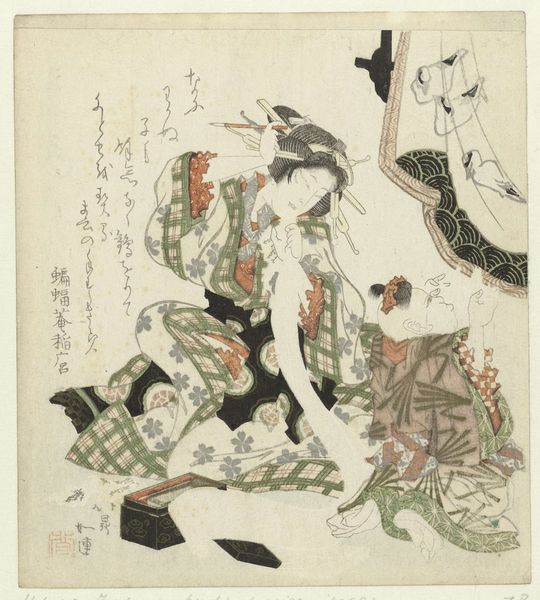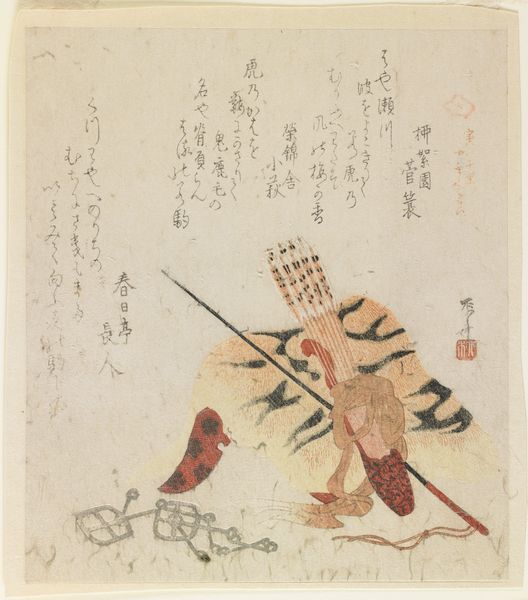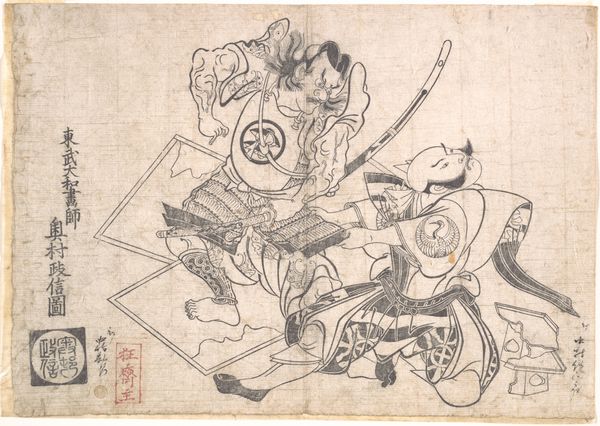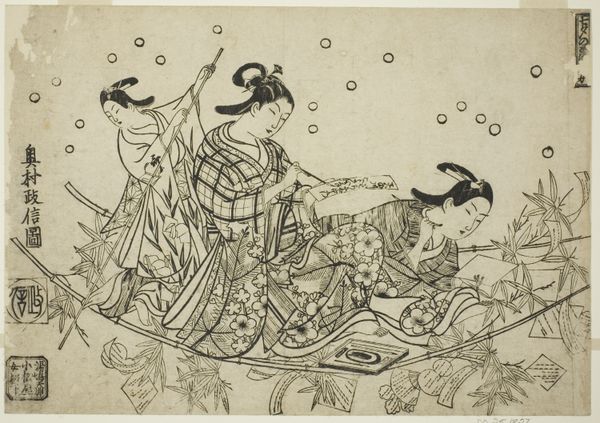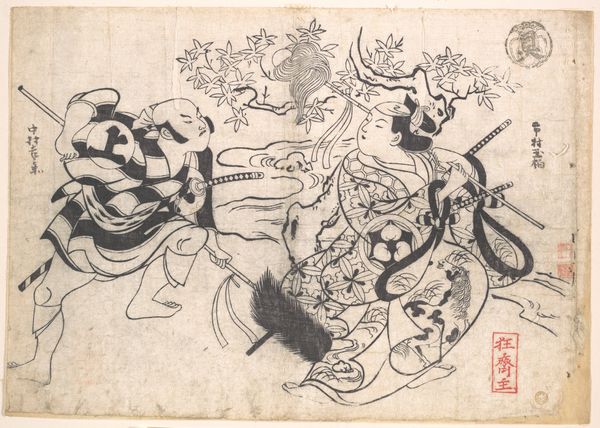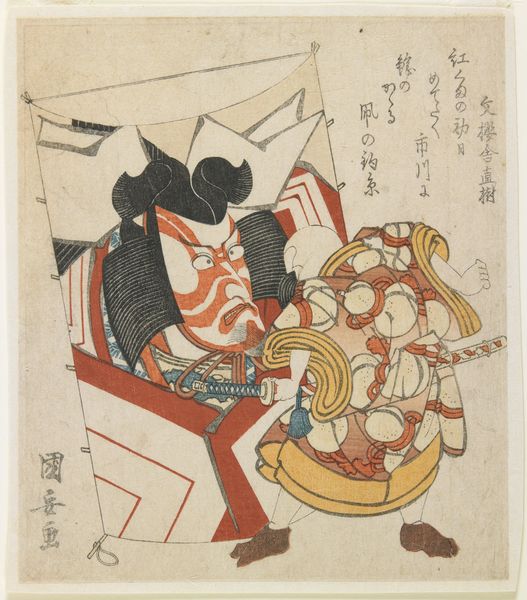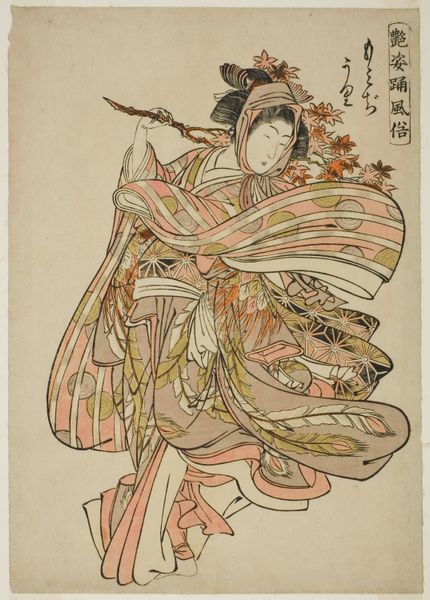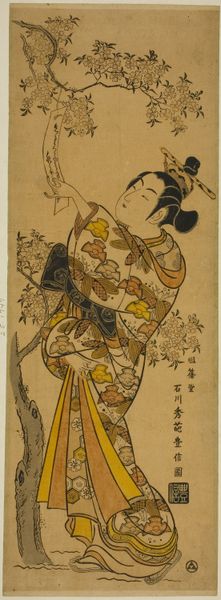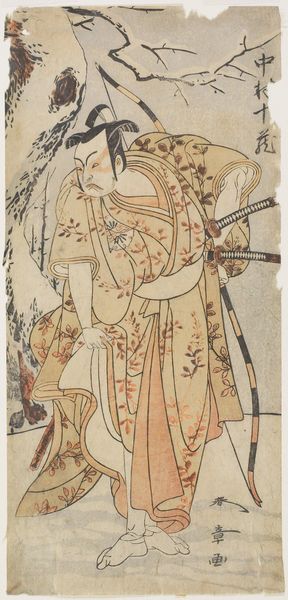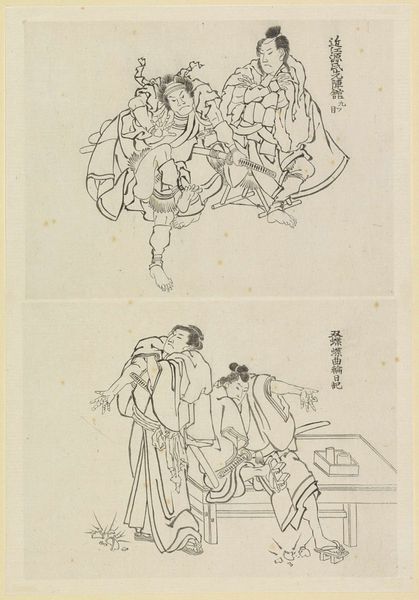
print, ink
#
narrative-art
# print
#
asian-art
#
ukiyo-e
#
figuration
#
ink
Dimensions: 4 7/8 x 4 13/16 in. (12.4 x 12.2 cm) (image, sheet)
Copyright: Public Domain
Editor: This is "Act 3", an 18th-19th century ink print by Chōki. It looks like a scene from a play, maybe a dramatic fight scene. What strikes you most about this work? Curator: I'm immediately drawn to the performance of masculinity here, and the socio-political commentary imbedded within. The Ukiyo-e style, though seemingly focused on aesthetics, was often a veiled critique of the ruling class and social hierarchies. Consider the power dynamics visualized: who is in control, who is subjugated, and how are these roles performed through gesture and attire? Editor: I hadn't thought of it that way. I was focused on the action and the expressions, but I see what you mean about the performance. How would you say the artist critiques social hierarchies? Curator: Look at the clothing of each figure and what their clothing and posture symbolize. Are they conforming to expectations, or are they subverting them? Think about the role of theatre itself in Edo society, especially Kabuki. Kabuki offered a space for examining social roles. Editor: So you are saying this image, extracted from theatre, is re-performing that social commentary and critiquing those roles? It’s not just aesthetic or a fight scene. Curator: Precisely. And remember that prints were relatively accessible, thus this critique reached a wider audience. It allowed for the potential of broader public awareness and possibly dissent. Who has the power to represent, and how might that representation be a form of resistance? Editor: I never thought a print could contain so many layers of social and political meaning. Thanks for this analysis. It changed the way I will approach art in general. Curator: Remember to always look at art through various lenses. In thinking through different perspectives, one can better see how culture informs an artwork and the power relations in art and life.
Comments
No comments
Be the first to comment and join the conversation on the ultimate creative platform.
